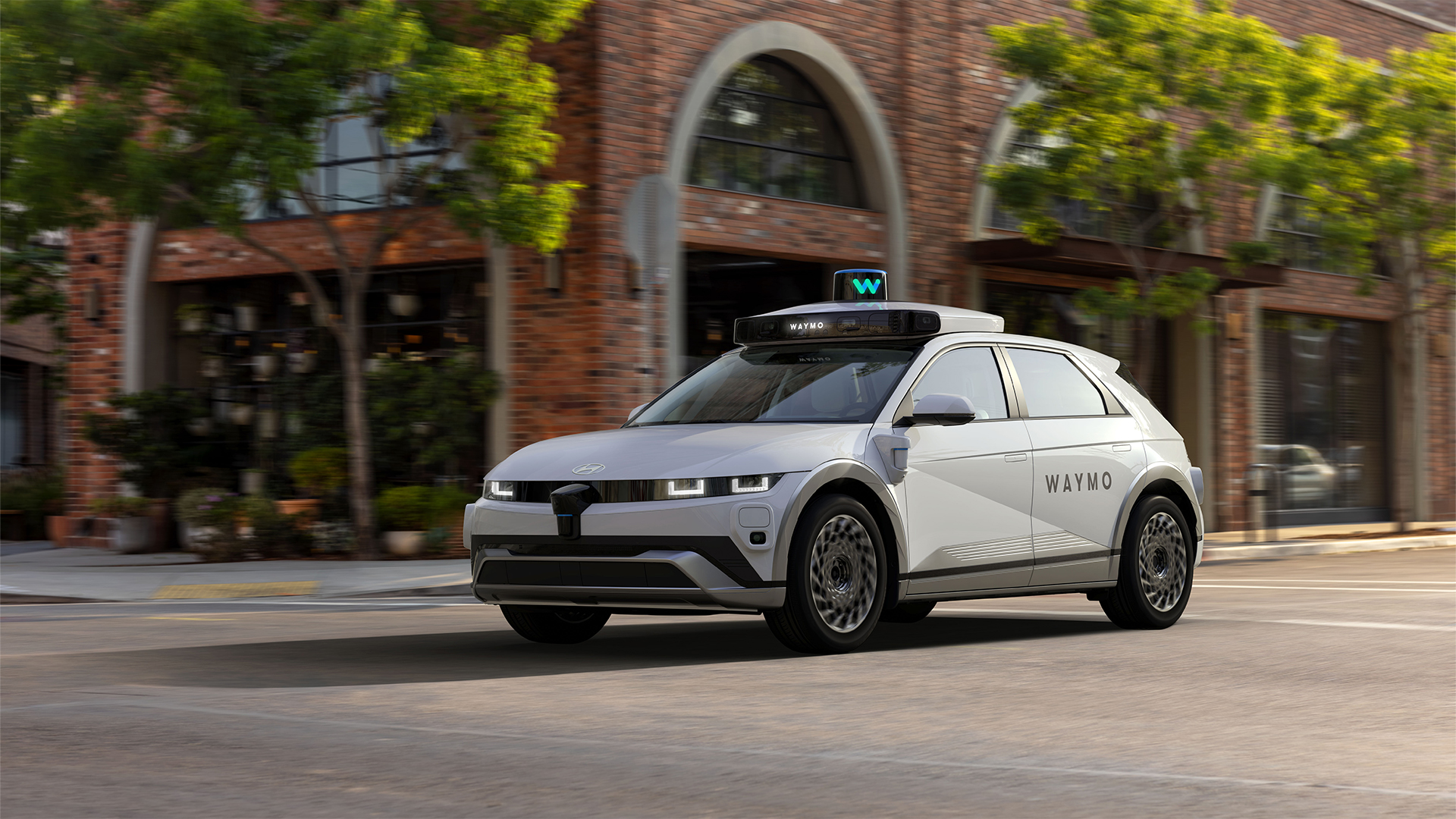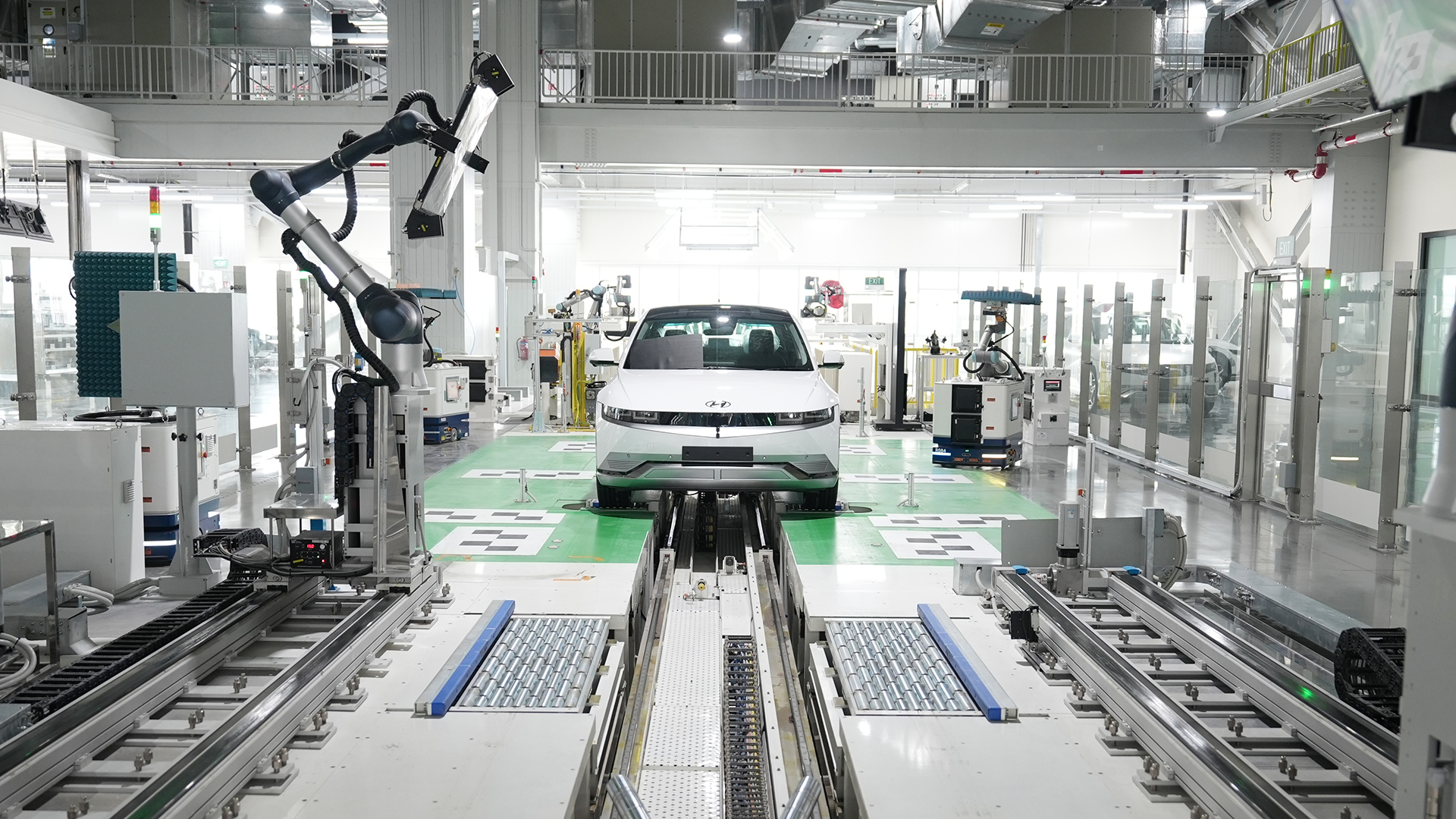
Hyundai and Waymo have inked a multi-year deal that will see the South Korean automaker implement Waymo's sixth-generation fully autonomous technology into its own purpose built Ioniq 5 robotaxi platform.
We reported last year on Hyundai’s next-gen smart factory that recently opened its doors in Singapore, which was chiefly tasked with producing the Ioniq 5 robotaxi at scale using the latest developments in robotics and AI to automate the process.
Hyundai Motor Group Innovation Center Singapore (HMGICS, for short), has since passed many of its innovative production methods onto the company’s newest Metaplant America (HMGMA) in Savannah, Georgia, where Waymo’s Ioniq 5 will be built at scale.
There is no word on how large the order is, but Waymo is expanding at a rapid rate, already running an autonomous service in San Francisco, Los Angeles and Phoenix, with an announcement in the summer of 2023 that it would start testing in Austin, Texas. It plans to roll out a full service in Austin before the end of the year.
Waymo’s decision to opt for Hyundai’s platform will rapidly speed up the rate at which it the company can expand into further territories, as the vehicles will effectively roll off the production line ready to go, rather than having to undergo a series of hardware and software tweaks before they are operational.
Hyundai established a joint venture with autonomous driving specialist Aptiv in 2020, which also gave the manufacturer access to robotaxi and autonomous transport start-up Motional.
However, Motional announced back in May of this year that it would pause its deployments with ride-hailing firms Uber Technologies and Lyft to focus on hardware development, which Hyundai has effectively now used to forge its latest deal.
Motional says it plans to resume its own robotaxi service in 2026, or when the business model becomes more viable. Allowing Waymo to continue paving the way could provice Hyundai (and Motional) with the perfect springboard to launch their own, revamped services.
Analysis: Robotaxis are all the rage

With Tesla set to unveil its vision of an autonomous ride-hailing service in a glitzy, Hollywood event this week, it appears the driverless taxi is open for business, where the technology leaps from an obscure pilot programme to providing over 100,000 paid driverless rides per week, as is the case with Waymo.
The recent announcement with Hyundai will only assist Waymo in expanding its operations across North America, with the company likely replacing the ageing Jaguar I-Pace vehicles it has been running as part of its partnership with Uber, as well as rolling them out to the wider fleet.
Arguably the biggest loser in the recent deal is Zeekr, which had previously announced a business venture that would see its eCM1s people-carrier platform used in Waymo’s operations.
However, the recent 100 per cent tariffs on Chinese-made EVs imposed by the US government has likely made the deal less lucrative, while news that the US might outright ban any vehicle technology hailing from China is probably the final nail in the coffin.
As a result, Hyundai Motor Group is on a path to become a leading provider of autonomous vehicles to numerous companies, as it looks to rip up the rulebook of what it means to be a ‘legacy automaker’.
Chang Song, the company’s head of advanced vehicle platform division and software defined vehicle advocate has previously spoken at length of his vision to implement the humble passenger car into a wider network of autonomous and ride-hailing transport services.
Song believes that by opening up the Group’s software to external developers, the company will create “killer apps” that will not only seamlessly integrate into user’s daily digital lives, but also bring customers flocking to the brand in the future.
You might also like
- Toyota invests another $500 million in an electric air taxi company as it soars toward the future of air mobility
- Cybertruck's latest recall reminds us that Tesla is no longer the keeper of our all-electric dreams
- Hyundai is building its own in-car AI system – and it actually sounds like a good idea







